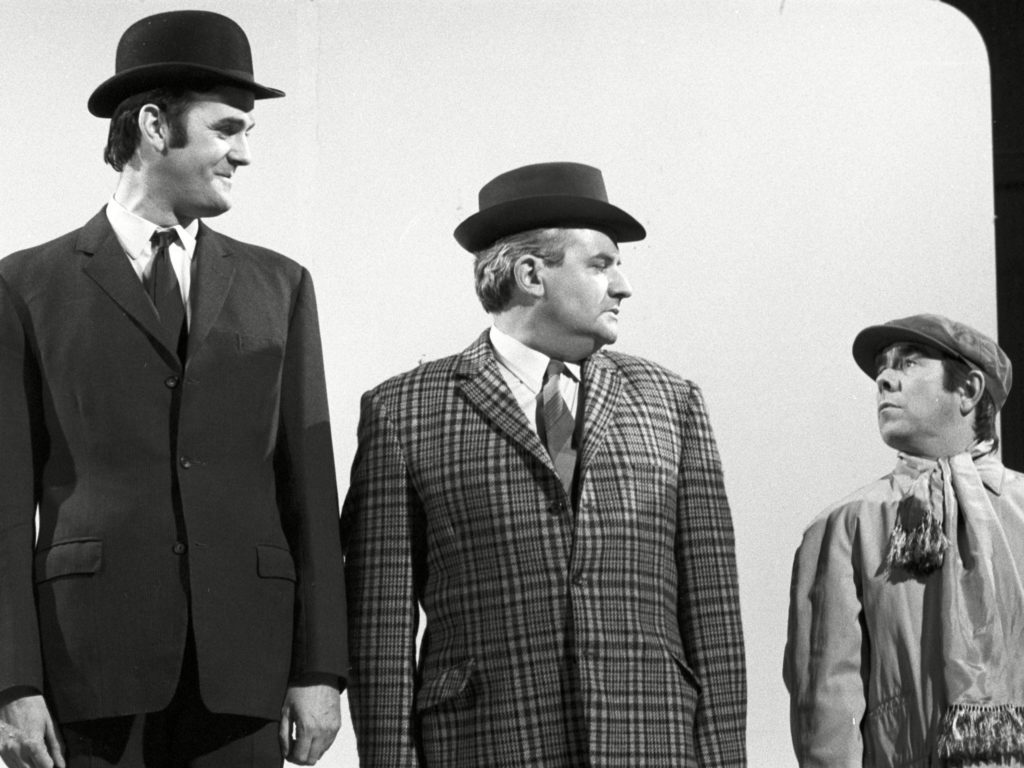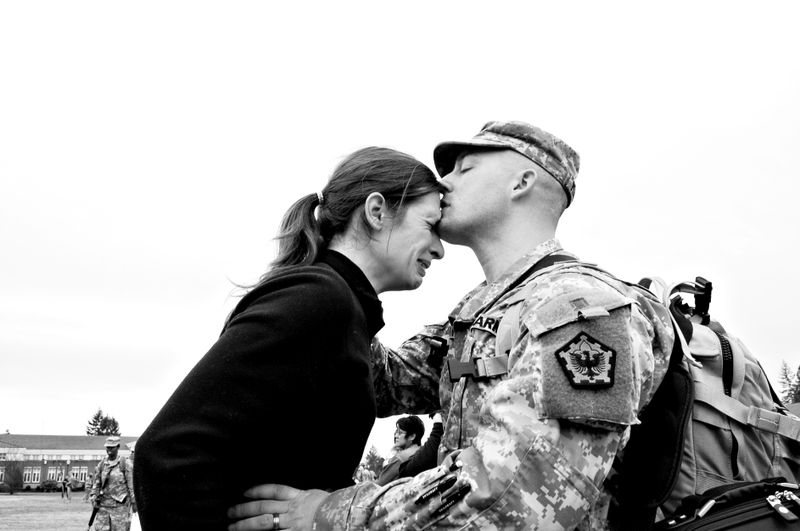Voices of Discord Revisited | Students often struggle with the fact that the results of an analysis are shaped by the angle from which you approach the text.
The aim of this module is practice critical thinking and show students exactly how different critical approaches lead to different results.

To this end I have chosen one core text: War Music/Ballad of a Hero by British spoken word artist Kate Tempest and five different critical approaches. The lyric is particularly interesting because it exists in a number of diffent variants. Ballad of a Hero may simultaneously be found as a:
Thus Tempest’s poem is an ideal piece to highlight the difference between poetry as read (text on paper), utterance (spoken word performance) and song (musical performance).
The key to Voices of Discord is the continued analysis of one text from multiple angles. The students’ appreciation of the text gradually deepens as one step in the analysis provides scaffolding for the next.
The first step is close reading of the poem. The analysis is then expanded to include three additional modes of theory. As a general guide, students are asked to read relevant sections of The English Handbook by Trine Østergaard (Systime, 2017):
- Formalist/New Critical (self-contained aesthetic object)
- Sociolingusitic (sociolect and class differences)
- Psychological (PTSD/battlemind vs. homemind)
- Historical/Biographical (contextual)
From the Inside Out: The Formalist Approach
Overall, I have chosen to work from a strict close reading of the poem to methods that gradually widen the scope by bringing in different layers of context. In the first step students are only allowed three things:
- a printed copy of the poem (we are working with the text as read)
- a pen (or pencil)
- their own eyes and brains
Only in the second step are students permitted to listen to a performance of the lyric. By not allowing computers or other aids, students are forced to engage closely with the text and reach out to each other – and the teacher – for help and explanations of difficult words.
In a world where the first instinct is to google the consensus, this can be a daunting task. But students also express a growing sense of pride, when they realize just how far they can actually get with nothing but time and attention to detail.
A Note on Planning
In the course evaluation students said that they felt that the module had been really interesting and had given a very good understanding of how to approach literary analysis. On the other hand, dealing with the same text over and over also proves a bit boring as time passes.
In my experience the module works best in a condensed form, perhaps setting aside 2-3 back to back 90 minute lessons.
Morten M. Pedersen
The Devil’s in the Detail
After reading and analyzing the poem on their own, students listen to Kate Tempest’s reading/performance of the text. Tempest is originally a spoken word artist and there are several variants of the poem available online. Including the performance aspect yields a number of interesting pointd that become important later on.
In regard to literary history, it is interesting to note that Kate Tempest strongly connects with the oral tradition of storytelling found in folktales and medieval folksongs. Ballad of a Hero is written in a traditional ballad form with regular iambic meter alternating between four stroke and three stroke lines and alternating rhymes:
Your Daddy is a soldier son,
ballad of a hero; stanza 1
ᵕ – ᵕ – ᵕ – ᵕ –
Your Daddy’s gone to War,
ᵕ – ᵕ – ᵕ –
His steady hands they hold his gun,
ᵕ – ᵕ – ᵕ – ᵕ –
His aim is keen and sure.
ᵕ – ᵕ – ᵕ –
Tempest makes very clever use of this basic ballad form to stress the ambiguities of the poem’s subject matter. In the poem a soldier returns from service in Afghanistan outwardly the hero but inwardly scarred by his experiences in the war-torn country. As the poem progresses, the hero gradually isolates himself from friends and family and the trauma of war reveals itself:
He’s drinking more than ever son
ballad of a hero; Stanza 8
ᵕ – ᵕ – ᵕ – ᵕ –
Before, he never cried. But now,
ᵕ – ᵕ – ᵕ – ᵕ –
I wake at night and feel
ᵕ – ᵕ – ᵕ –
Him shaking by my side.
ᵕ – ᵕ – ᵕ –
Notice how Tempest moves one beat from the third to the second line of the stanza. This causes the rhythm to shift as the stanza now has two lines of four strokes followed by two lines of three strokes. As a result, the rhyme scheme also breaks down as none of the lines rhyme on paper. When you read the stanza out loud, however, both rhythm and rhyme scheme appear to be unaffected. By punctuating the second line and moving the fouth beat “but now” up one step, Tempest simply creates an internal rhyme in place of the end rhyme employed in the regular stanzas.
As stated above, this change is undetectable in performance. It is only when you look carefully at the written stanza that it becomes apparent. The really clever thing is that the formal change coincides with the exact moment the soldier’s change of behaviour begins to show. In daylight and public he is still the hero, but beneath the surface lies a different story.
You might also like: Fabula Storytelling Cards: Fleksibelt og Genialt
Listen and Learn: The Sociolinguistic Approach
Another perspective that may be gleaned by listening a performance of the poem is Tempest’s emphasis of social class and class dynamics in Britain. The language in “Ballad of a Hero” is clearly that of working and lower middle class people. Thus it might be interesting to approach the poem from the perspective of sociolinguistics.

In preparation I ask students to explore language difference between native speakers by listening to recordings of Received Pronunciation as well as a variety of regional dialects. There are a number of good resources for this online. Some of my favourites which I have used in the past include:
- Rosalie Kroes, “Sociolects and Dialects in England’s Social Classes” (Blog Post, 2012)
- Richard Nordquist, “Social Dialect or Sociolect Definition and Examples”
- Alan Cowell, “Class Wars; Britain’s Upper Crust still Soldiers On”
Alan Cowell’s piece examines how the British Army is still made up along class lines with officers most often drawn from the upper echelons of society while regular soldiers and NCOs usually come from working and lower middle class backgrounds.
Performing the poem in her South London/Estuary accent, Kate Tempest clearly draws attention to the lower class origins of her characters. This in turn links with both thematic preoccupations of the poem and the folk origins of the ballad form.
Responding to Trauma: The Psychological Approach
Time to widen the circle once again. The subject matter of “Ballad of a Hero” revolves around a mother telling her son about his father’s war. The emotional turmoil of going into and returning from battle is a pivotal theme in the poem. Therefore it also makes sense to apply a psychological approach to the analysis.
In doing so, I draw on materials found in Christopher Bisgaard Olesens excellent book From Battlemind to Homemind. (Forlaget Columbus, 2013). Initially, students are asked to watch a short video and read an article by psychologist Mark Goulston:
- Mark Goulston, “PTSD Symptoms: 7 Signs that may signal PTSD” Huffington Post Blog, 2010)
- Mark Goulston, “PTSD from the inside out – A Soldier’s Story” (Video)
And subsequently given the task of finding symptoms of Post Traumatic Stress Disorder in “Ballad of a Hero”. Thus the psychological approach gives a wider perspective and another angle from which to interpret the poem. But even as the circle widens, we stay very close to the centre of the poem’s world and characters.
Everything Explodes: The Historical/Biographical Approach
One thing I did not originally anticipate in this module was the utter mayhem and confusion, which ensued when we moved on to the historical/biographical approach. I thought that the body of work we had already done would make it relatively easy for students to place the poem in historical context based on these tasks:
A | Find information online about Kate Tempest and the socio-historical background of ‘Ballad of Hero’. Wikipedia and Eleanor Stanford’s article are good places to start.
- Research Kate Tempest
- Background
- Political stance
- Main Works and Themes
- The concept of ‘radical empathy’
- Socio-political background for “Ballad of a Hero”
Eleanor Stanford, “How Kate Tempest makes “radical empathy” more than just a buzzword” (Literary Hub, 2017)
B | Analyse ‘Ballad of a Hero’ using the biographical/historical approach to literature (The English Handbook)
- Find historical references in the poem
- Look for signs of the poets ideological/political stance.
- What is Tempest’s purpose with writing the poem?
- How does the poem reflect the concept of ‘radical empathy’?
Drowning in Possibilities
As it turns out, students had no idea where to begin when confronted with the vast expanses of the world wide web. I think therefore that it is essential to provide additional scaffolding to help the students map out a viable route to relevant information.
One way of approaching this may be to make very sure that results and conclusions from the preceding work are clear in the students’ minds before moving on. On that background, I think it would be a good idea to add two assignments:
Task A1 (in groups of four)
- Go through your notes and discuss the results and conclusions on the whiteboard.
- Write out a list of search terms, keywords and phrases to help you accomplish task A. Search terms may include: “Kate Tempest Politics”, “Kate Tempest Biography”, etc.
And
Task C (Individual work)
Reflective writing | Write for 4×2 minutes about your experience of the historical/biographical approach. Try to answer the following questions as they are presented to you:
- What is a historical/biographical approach to analysing literature?
- What makes working this way difficult?
- How can this method help us gain a better understanding of a text?
- How may this approach take us away from the object of study?
I think the frustration and difficulties of working with a historical/biographical approach is a valuable learning experience – not least because it shows students that their instinct of searching for answers online rather than in their own minds is fraught with potential missteps.
A Step Beyond: Discourse Analysis
The final step of Voices of Discord, is really a module onto itself. As a final twist on “Ballad of a Hero” I introduced students to the basic concepts of discourse analysis and took a step into one of the many possibly subjects that might be related to the poem.
One of the conclusions from the analysis was that the poem was partly written in response to Kate Tempest’s disappointment with the protests against the war in Iraq which saw crowds of almost 750.000 people march on London in 2003 with little to no impact on political decisions at the time.
As a result we chose to work with political discourse in relation to the war in Iraq before returning to apply the vocabulary of discourse analysis to Tempest’s poem.
In retrospect, I think a better solution would be to run Voices of Discord and the analysis of “Ballad of a Hero” on its own. The experience of working thoroughly with a single text from multiple perspectives is incredibly valuable and makes a great platform for students to engage with other critical approaches – like discouse analysis.
A complete list of course materials including discourse analysis may be found her: Voices of Discord Kate Tempest, Criticism and Modes of Discourse



